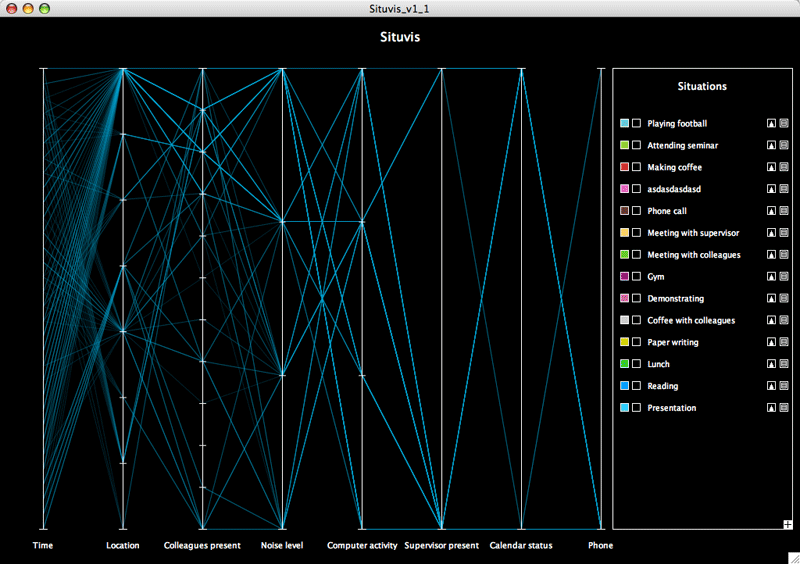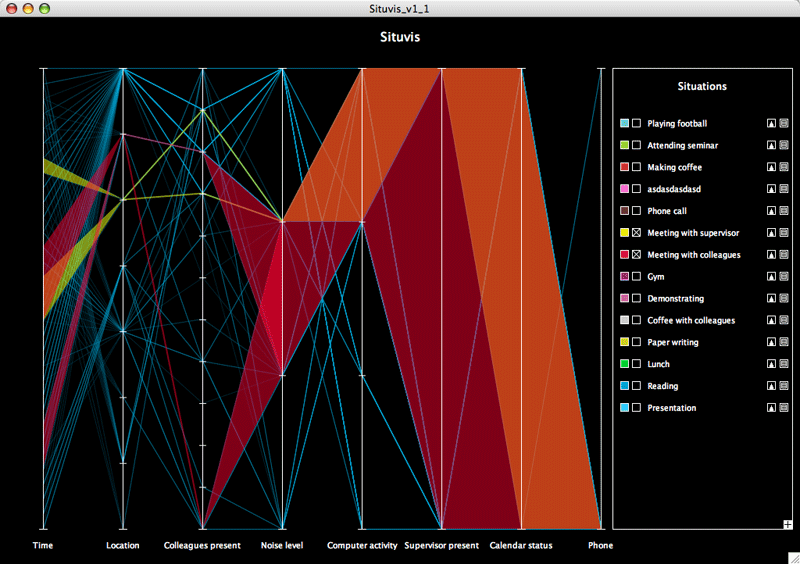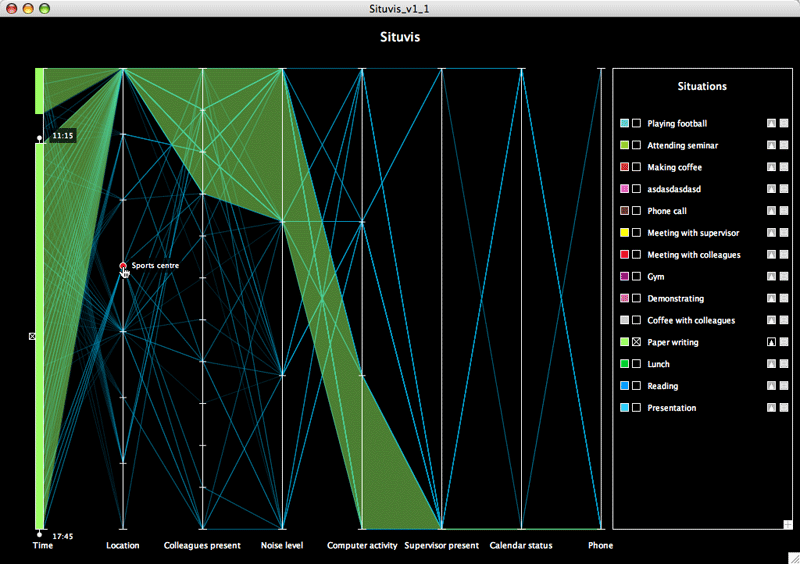Situvis: a visual tool for modeling a user's behaviour patterns in a pervasive environment
"Situvis: a visual tool for modeling a user's behaviour patterns in a pervasive environment" by Adrian K. Clear, Ross Shannon, Thomas Holland, Simon Dobson, Aaron Quigley and Paddy Nixon.
Seventh International Conference on Pervasive Computing (Pervasive 2009). DOI.
@inproceedings{ClearSHQDN09,
author = {Adrian K. Clear and
Ross Shannon and
Thomas Holland and
Aaron J. Quigley and
Simon A. Dobson and
Paddy Nixon},
title = {Situvis: A Visual Tool for Modeling a User's Behaviour Patterns
in a Pervasive Environment},
booktitle = {Pervasive},
year = {2009},
pages = {327-341},
ee = {http://dx.doi.org/10.1007/978-3-642-01516-8_22},
crossref = {DBLP:conf/pervasive/2009},
}
About this project
Paper abstract:
One of the key challenges faced when developing context-aware pervasive systems is to capture the set of inputs that we want a system to adapt to. Arbitrarily specifying ranges of sensor values to respond to will lead to incompleteness of the specification, and may also result in conflicts, when multiple incompatible adaptations may be triggered by a single user action. We posit that the ideal approach combines the use of past traces of real, annotated context data with the ability for a system designer or user to go in and interactively modify the specification of the set of inputs a particular adaptation should be responsive to. We introduce Situvis, an interactive visualisation tool we have developed which assists users and developers of context-aware pervasive systems by visually representing the conditions that need to be present for a situation to be triggered in terms of the real-world context that is being recorded, and allows the user to visually inspect these properties, evaluate their correctness, and change them as required. This tool provides the means to understand the scope of any adaptation defined in the system, and intuitively resolve conflicts inherent in the specification.
Downloads
Situvis v1.1 (requires Processing).
Videos
Images
- 6 days of contextual data, plotted on a PCV.

- Traces which constitute “Meeting” situations. The user entered this situation at multiple times during the day under a host of different circumstances.

- The user can interact with the visualisation to expand or contract the range of cases covered by a situation definition, so that their system can respond to more specific or more general situations.
